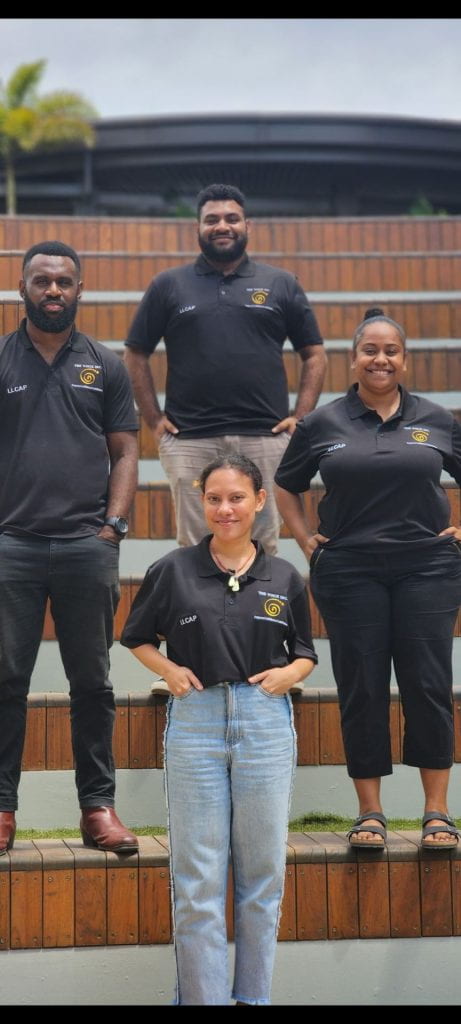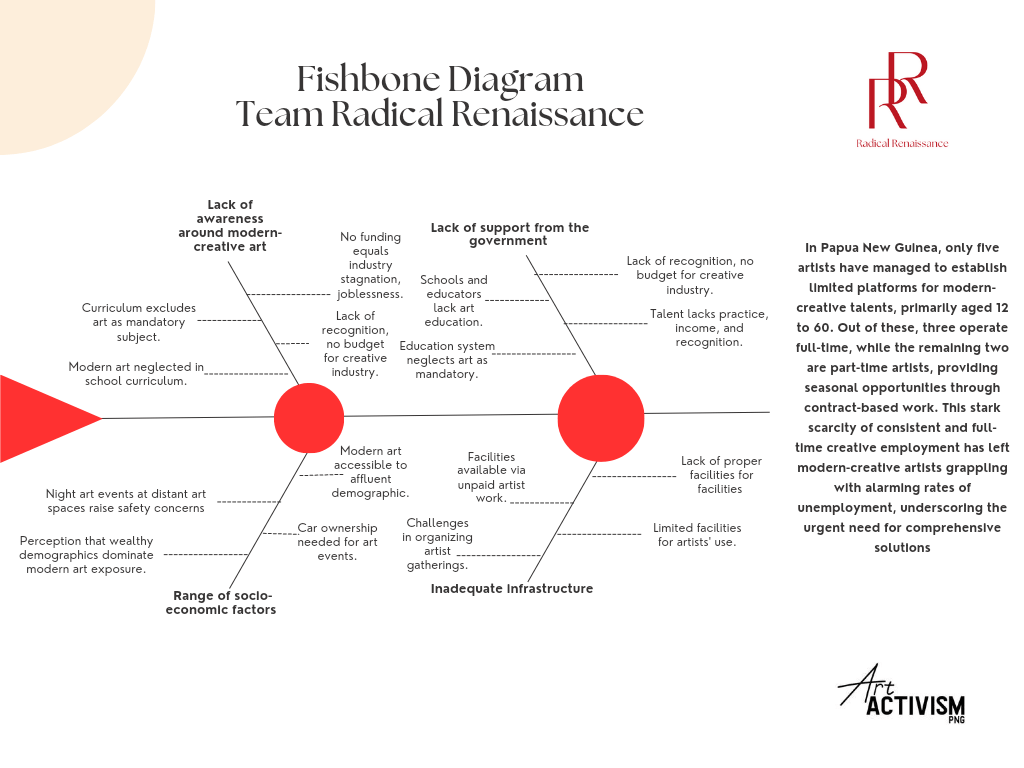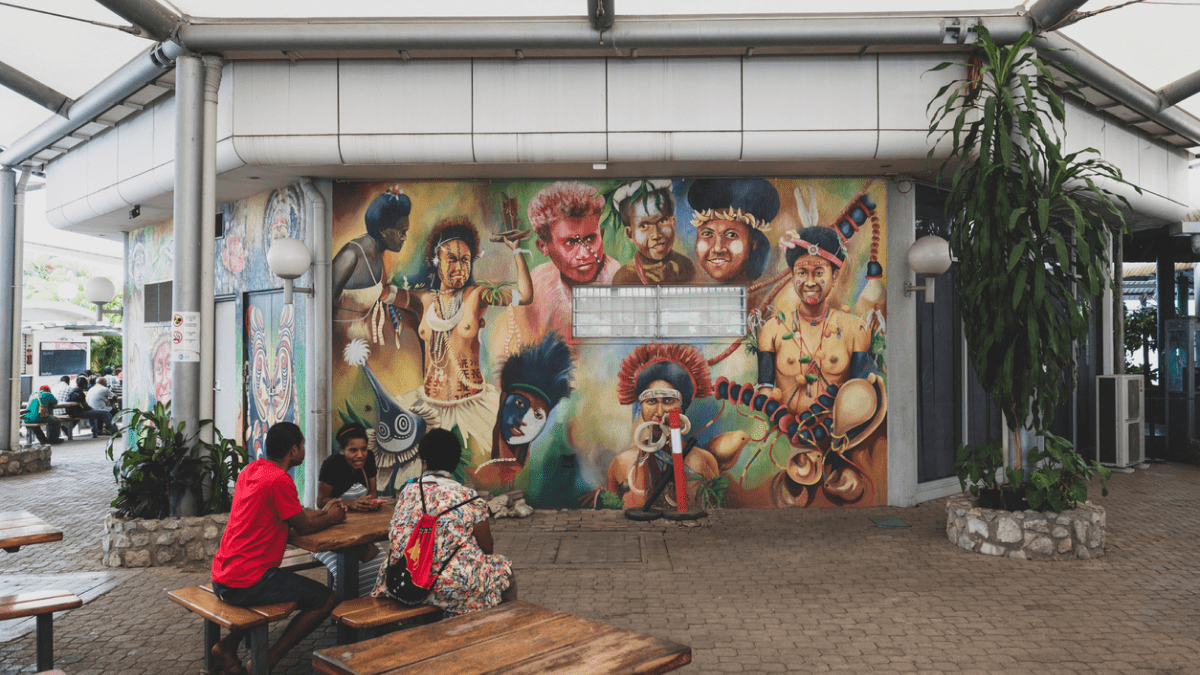Guest blog written by Hananiah Dickson, Nelson Kokoa, Jasmine Kuliniasi, Emmanuel Wanya
In the heart of Papua New Guinea, where the rich tapestry of tradition and culture intertwines, our team: Radical Renaissance, stands resolute in our mission. Comprising four individuals from Art Activism PNG, we are on a quest to tackle a daunting challenge – youth unemployment. Our weapon of choice? Art. Armed with the Problem Driven Iterative Adaptation (PDIA) Program, we’re forging new pathways, empowering young artists and creative minds to shape their destinies. We’re on a mission to ignite a movement, where the creative industry in Papua New Guinea becomes a beacon of opportunity and cultural growth, while we celebrate our nation’s rich heritage.

Our journey began with a vision, one deeply rooted in the belief that every young person in Papua New Guinea possesses a unique talent waiting to be unearthed. The challenge of youth unemployment weighs heavily on our nation, but within it, we saw an opportunity. We envisioned a world where art could be a viable career path, a world where creativity could fuel economic and cultural growth. The creative industry has untapped potential, and we aimed to unlock it, nurturing a thriving community of young artists and creative professionals. Our goal is simple yet profound – to transform lives by empowering the youth through the power of art.
As we delved into our mission of addressing the challenging issue of youth unemployment in Papua New Guinea, we initially embraced art as our primary weapon for change. We believed that art had the potential to provide young people with a viable career path, thereby addressing the unemployment crisis in our nation. However, as we embarked on this journey, we engaged in extensive discussions with authorizers, beneficiaries, and stakeholders. These conversations illuminated a critical realization – the core reason why art wasn’t perceived as a viable career option in Papua New Guinea wasn’t due to a lack of potential within the creative industry. It was because art, in all its forms, was undervalued and underappreciated. This revelation became the driving force behind our subsequent actions and our refined problem statement.
After multiple iterations and much deliberation, we eventually converged on a problem statement that encapsulated the gravity of the issue. The problem statement that became the cornerstone of our efforts succinctly reads: “In Papua New Guinea, only five artists have managed to establish limited platforms for modern-creative talents, primarily aged 12 to 60. Out of these, three operate full-time, while the remaining two are part-time artists, providing seasonal opportunities through contract-based work. This stark scarcity of consistent and full-time creative employment has left modern-creative artists grappling with alarming rates of unemployment, underscoring the urgent need for comprehensive solutions.”
In our quest to dissect this multifaceted problem and identify its root causes, we turned to a valuable tool introduced during the PDIA course—the fishbone diagram. This diagram enabled us to break down the overarching problem statement into its constituent causes and sub-causes, ultimately leading us to pinpoint areas where action could be taken. The four primary causes we identified on our fishbone diagram were:
1. Lack of awareness around modern-creative art,
2. Lack of support from the government,
3. Range of socio-economic factors,
4. Inadequate infrastructure.
Each of these causes had a cascading effect on the overall issue of youth unemployment in the creative industry. Our approach in tackling this complex problem involved systematically addressing these root causes one by one.

To tackle the intricate challenge of youth unemployment within the creative industry in Papua New Guinea, we’ve adopted a deliberate and incremental approach. Our strategy is to methodically address each cause and sub-cause identified on our fishbone diagram, beginning with the root issues. We believe that taking small steps and making focused efforts is the key to instigating meaningful change.
Our journey to solving the issue began by concentrating on the initial bone of the fishbone diagram: the “Lack of awareness around modern-creative art.” We recognized that increasing awareness is the first crucial step in unlocking the potential of the creative industry as a viable career path. To this end, we’ve initiated a social media campaign aimed at informing and inspiring individuals about the possibilities that modern creative art offers.
The “taking small steps” approach we’ve adopted has fundamentally shifted our problemsolving mindset, emphasizing the value of breaking down complex challenges into manageable tasks. It’s taught us that impactful change often arises from the accumulation of many small, deliberate steps, allowing us to maintain motivation and adapt as we learn. This approach will likely shape our future problem-solving endeavors, guiding us to approach complex issues with patience, persistence, and a commitment to making incremental progress, understanding that transformative change can be achieved step by step.
As time progresses, we are committed to persistently taking small but purposeful steps to address each bone on the fishbone diagram. With thorough research and ongoing conversations with stakeholders, beneficiaries, and the community, we remain open to the possibility of adding more bones to our diagram as we gain a deeper understanding of the complexities of the issue. Our path is one of continuous learning and adaptation, as we remain dedicated to paving the way for a brighter future for aspiring artists and creative professionals in Papua New Guinea.
Our Message to Fellow PDIA Practitioners
As PDIA practitioners, we share a journey fueled by determination and a commitment to making a positive impact in our communities and the world. Remember that the road to change is often winding and challenging, but it is in those small, purposeful steps that transformation begins. Embrace the power of incremental progress, take solace in the knowledge that setbacks are opportunities to learn, and above all, remain unwavering in your belief that positive change is possible. Let the spirit of PDIA continue to guide you, for it’s not just a methodology; it’s a philosophy of persistence, adaptation, and the unwavering belief that even the most complex problems can be solved, one small step at a time. Together, we can make the world a better place through our collective efforts and unyielding dedication to change.

This blog was written by participants who completed a 12-week PDIA for PNG online action learning program from August – December 2023. 36 participants successfully completed this program.
